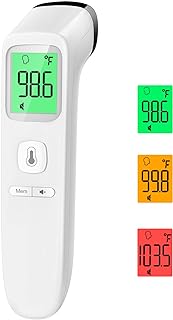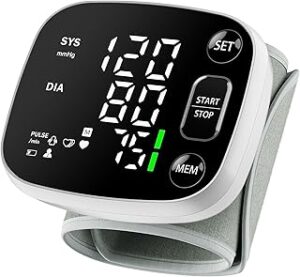A thermometer is a medical device used to measure body temperature. It helps assess whether a person has a fever or is experiencing abnormal temperature fluctuations, which can be indicative of infection, illness, or other health conditions. There are several types of thermometers, each designed for different methods of temperature measurement, ranging from oral to digital, and infrared models.
Types of Thermometers:
Digital Thermometers:
How it works: These are electronic devices that provide a digital reading of the temperature. They use a sensor to measure temperature and display the result on a digital screen.
Usage: Most commonly used for oral, underarm (axillary), or rectal temperature measurements.
Advantages: Quick readings (usually within 10–30 seconds), easy to use, and available in both medical and home settings.
Oral Thermometers:
How it works: A thermometer is placed under the tongue for an accurate measurement of body temperature.
Usage: Ideal for adults and children who can hold the thermometer properly in their mouths.
Advantages: Non-invasive and accurate.
Limitations: Not suitable for infants or those who cannot keep their mouths closed.
Rectal Thermometers:
How it works: These thermometers are inserted into the rectum, where they measure the core body temperature.
Usage: Often used for infants, young children, or when more accurate readings are needed.
Advantages: Provides one of the most accurate body temperature readings.
Limitations: More invasive and less comfortable than other methods.
Axillary (Underarm) Thermometers:
How it works: These are placed in the armpit for temperature measurement.
Usage: Common in young children and in situations where other methods may be impractical.
Advantages: Non-invasive and simple to use.
Limitations: Generally less accurate than oral or rectal readings, as the temperature may not reflect the body’s core temperature accurately.
Tympanic (Ear) Thermometers:
How it works: Measures the infrared heat emitted from the eardrum using a sensor placed in the ear canal.
Usage: Suitable for children and adults and provides quick readings.
Advantages: Fast and accurate when used correctly, non-invasive.
Limitations: Accuracy can be affected by earwax buildup, improper placement, or age (not recommended for newborns due to small ear canals).
Temporal Artery (Forehead) Thermometers:
How it works: Uses infrared technology to measure the temperature of the temporal artery (a blood vessel in the forehead).
Usage: Commonly used in both clinical and home settings, particularly for children.
Advantages: Non-invasive, quick, and easy to use.
Limitations: Can be influenced by sweating or external factors like room temperature, making it slightly less accurate than oral or rectal thermometers.
Mercury Thermometers (Less Common Today):
How it works: Mercury is used to expand inside a glass tube when exposed to heat, providing a temperature reading on the scale.
Usage: Previously common in both medical and household use.
Advantages: Accurate and durable.
Limitations: Mercury is toxic, and these thermometers are fragile, so they have been largely replaced by digital models.
How to Use a Thermometer:
Oral: Place the thermometer under the tongue, close the mouth, and wait for the beep or visual reading to indicate the measurement is complete.
Rectal: Gently insert the thermometer into the rectum about 1 to 1.5 inches (for infants and toddlers, use a rectal thermometer specifically designed for that purpose). Hold it in place until the reading is complete.
Axillary: Place the thermometer in the armpit and hold it in place, ensuring the arm is pressed down to avoid air gaps. Wait for the reading to stabilize.
Tympanic (Ear): Gently place the thermometer in the ear canal and press the button to take the reading. Ensure the ear is properly positioned for accurate results.
Temporal (Forehead): Swipe the thermometer across the forehead, following the instructions for a precise reading.
Normal Body Temperature:
Average body temperature: 98.6°F (37°C) is generally considered normal, but normal temperatures can range from 97°F to 99°F (36.1°C to 37.2°C).
Fever: A body temperature of 100.4°F (38°C) or higher is typically considered a fever, indicating that the body is fighting an infection or illness.
Hypothermia: A body temperature below 95°F (35°C) is considered dangerously low and can lead to life-threatening conditions if not addressed.
Advantages of Using a Thermometer:
Accurate Health Monitoring: Thermometers provide a reliable way to monitor body temperature, which is essential for diagnosing fever, infections, and other conditions.
Non-Invasive: Most modern thermometers, like digital and infrared models, provide non-invasive methods for temperature measurement, making them more comfortable for patients.
Ease of Use: Thermometers, especially digital models, are simple to use and widely available for home use, offering convenience for personal health monitoring.




Reviews
There are no reviews yet.